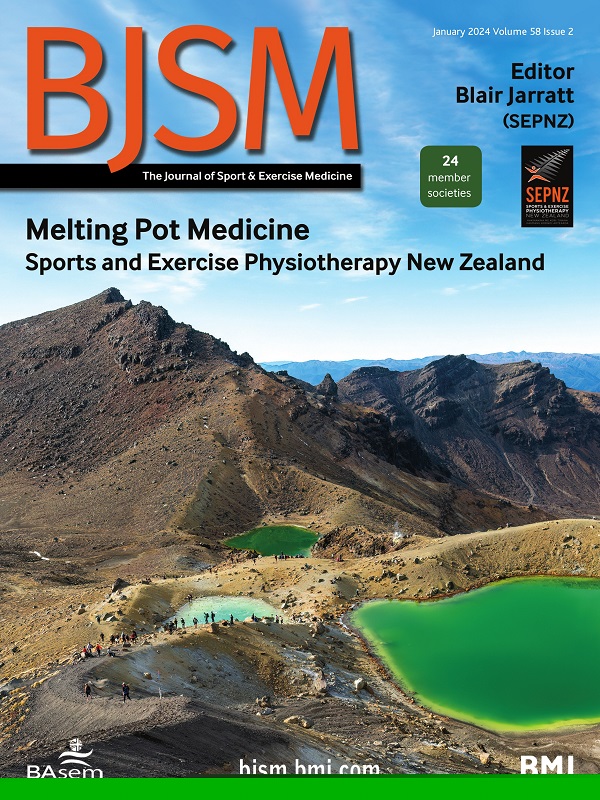Exercising to optimise healthspan: from evidence to community implementation
IF 16.2
1区 医学
Q1 SPORT SCIENCES
引用次数: 0
Abstract
The convergence of geroscience and physical activity research has sharpened the focus on healthspan—the years of life lived in good health, free from functional limitations, chronic disease or disability.1 As illustrated in figure 1, this period extends until an initial decline in functional capacity. While medical advances may extend lifespan, they can also prolong the period of disease and disability. In contrast, optimising healthspan aims to maintain or enhance functional abilities, thereby compressing the duration of morbidity in later life. This shift not only improves the quality of life for individuals but can also reduce the healthcare and social care burden on families and society. Figure 1 Optimising the healthspan. The healthspan, illustrated as the green-to-orange phase, represents the years lived free from functional limitations, chronic disease or disability (A). Curative medicine may extend life (B), but optimal healthspan is achieved by preserving function (C). Adapted from Seals et al ,1 reproduced with permission from Wagner et al .19 Ageing is associated with declines in aerobic capacity, muscle strength and mitochondrial function, all strongly linked to disability and mortality.2–5 Conversely, individuals who maintain adequate cardiorespiratory fitness not only live longer but also spend fewer years with disease.6 7 Longevity is not just about years lived, but …锻炼以优化健康跨度:从证据到社区实施
老年科学和体育活动研究的结合使人们更加关注健康寿命——即身体健康、没有功能限制、慢性疾病或残疾的寿命如图1所示,这一时期一直持续到功能能力开始下降。虽然医学进步可以延长寿命,但它们也可以延长疾病和残疾的时间。相反,优化健康寿命旨在维持或增强功能能力,从而缩短晚年发病的时间。这种转变不仅提高了个人的生活质量,而且还可以减轻家庭和社会的医疗保健和社会护理负担。图1优化运行状况跨度。健康寿命,用绿色到橙色表示,表示没有功能限制、慢性疾病或残疾的生活年限(A)。治疗药物可以延长生命(B),但最佳的健康寿命是通过保持功能来实现的(C)。改编自Seals等人,经Wagner等人许可转载。衰老与有氧能力、肌肉力量和线粒体功能的下降有关,这些都与残疾和死亡率密切相关。相反,保持适当心肺健康的人不仅活得更长,而且患病的时间也更短。长寿不仅仅是指活了多少年,而是指……
本文章由计算机程序翻译,如有差异,请以英文原文为准。
求助全文
约1分钟内获得全文
求助全文
来源期刊
CiteScore
27.10
自引率
4.90%
发文量
217
审稿时长
3-8 weeks
期刊介绍:
The British Journal of Sports Medicine (BJSM) is a dynamic platform that presents groundbreaking research, thought-provoking reviews, and meaningful discussions on sport and exercise medicine. Our focus encompasses various clinically-relevant aspects such as physiotherapy, physical therapy, and rehabilitation. With an aim to foster innovation, education, and knowledge translation, we strive to bridge the gap between research and practical implementation in the field. Our multi-media approach, including web, print, video, and audio resources, along with our active presence on social media, connects a global community of healthcare professionals dedicated to treating active individuals.

 求助内容:
求助内容: 应助结果提醒方式:
应助结果提醒方式:


